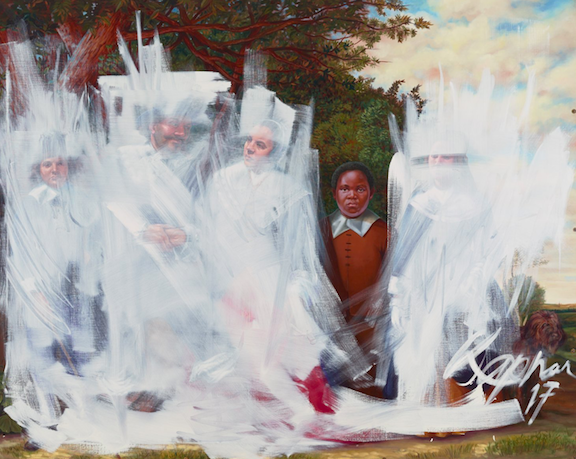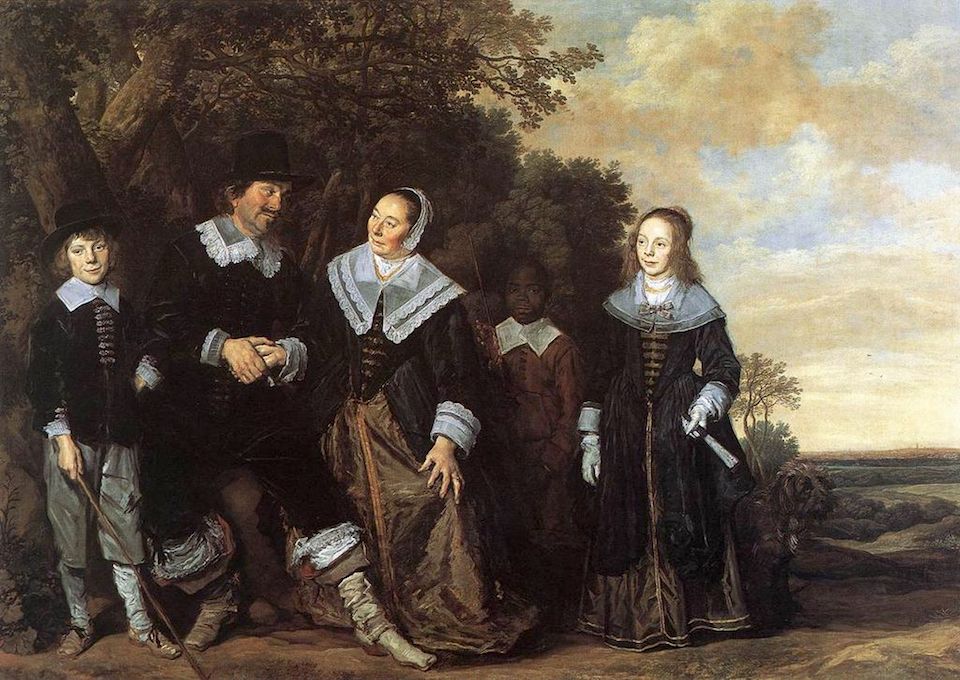Conclusion
“There’s more written about dogs in art history than there are about this other character here. Historically speaking, in research on these kinds of paintings, more information is available about the lace that the woman is wearing in this painting—the manufacturer of the lace—than about this character here, about his dreams, about his hopes, about what he wanted out of life.”[65]
Titus Kaphar, TED Talk, August 2017
It is difficult to discern precisely why early modern artists and patrons wished to include images of Black Africans in works of art. However, there is a clear indication that the enslaved persons and servants seen in the examples exoticize and Other people of color in Renaissance Italy and northern Europe. Curiosity is a typical human trait, yet the line becomes blurred when another’s race is used for one’s personal gain. Black Africans represented as attendants in images of white European men and women ornamentalized, and thereby dehumanized, the former figures to elevate the main subjects of the works. The art historians cited throughout this project are beginning to deeply engage with this imagery, to understand how it reflected and shaped racist views and hierarchies. Contemporary artists are doing the same. In his work Shifting the Gaze (2017) (Fig. 26), Titus Kaphar reinterpreted Frans Hals’ seventeenth-century Dutch painting Family Group in a Landscape (1645–48) (Fig. 27). Painted over the white figures in a group portrait, with a single black figure remaining visible, Kaphar applied a coat of white paint with a mixture of linseed oil, which will eventually fade over time, so the purpose of this would have not been to eradicate the white figures indefinitely. In doing this, Kaphar shifts the viewer’s gaze to the black figure, who, by his position in the frame, the family servant. Kaphar brings attention to the individuals who are often deliberately overlooked in the historical record, for reasons that include race, class, or gender. By doing so, he makes a case for the need to write new, more honest and inclusive histories. His point in doing so was that “there’s more written about dogs in art history than there are about this other character here. Historically speaking, in research on these kinds of paintings, more information is available about the lace that the woman is wearing in this painting—the manufacturer of the lace—than about this character here, about his dreams, about his hopes, about what he wanted out of life.”[65]
The early Renaissance was a formative time in European racial attitudes towards people of color, as the works analyzed in this project demonstrate. As has been shown, Black African men were depicted in mostly biblical scenes since the thirteenth century. However, the rapid representations of Black women were mostly in domestic and mythological scenes or rendered as the physically alluring inferiors to white women in social situations. As for the comparisons between the north and the south, it is evident that because of trade and traveling artists, many influences of depicting black figures in works of art became normalized. In discussing the stereotypes seen in later depictions of Black Africans and peoples of African descent, the signifiers used to portray their difference in society, and their status, I have shown that a number of recurring patterns can be detected and how human beings transformed between person, to objects, and used as an aesthetic in works of art during the Renaissance period. The influence and presence of Black people is still seen in European art and culture and large parts of the world. The question can then be posed, have we as a society been conditioned to ignore Black African figures in art? All of this being said, I hope to encourage us to think about who has traditionally been excluded from these histories and present a more inclusive narrative for the untold stories of Black Africans in the Renaissance.


